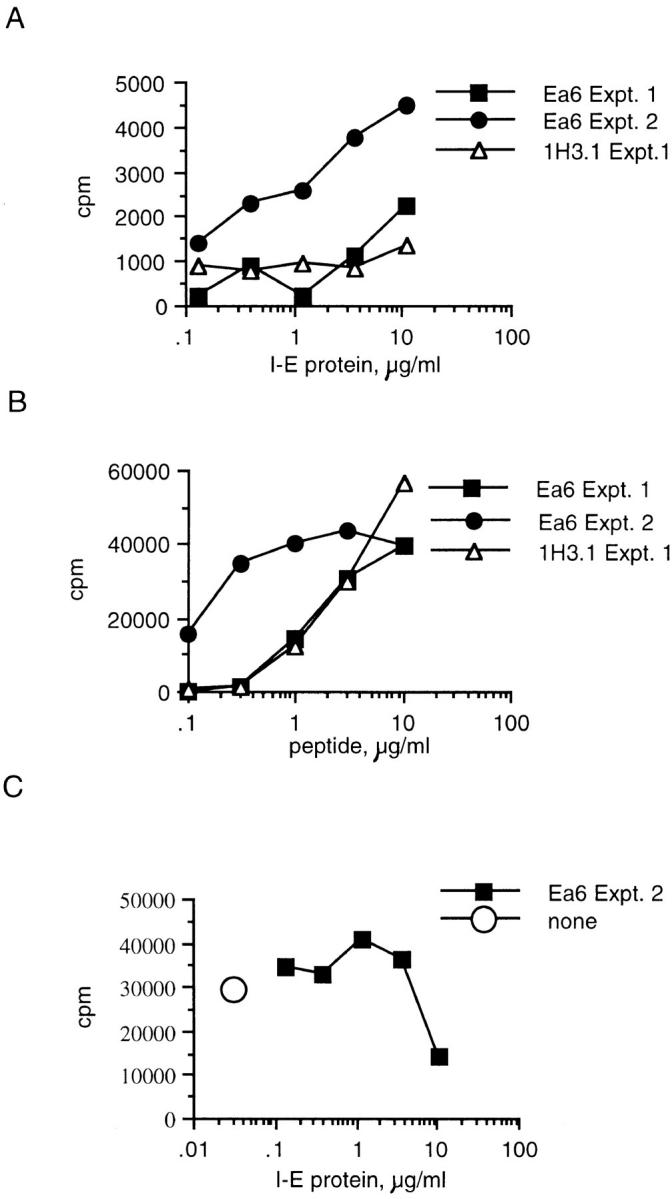Figure 6.

APCs can process whole I-E protein into the epitope required for Eα6 response when the protein was added exogenously. The response of Eα6 and 1H3.1 to whole I-E protein is shown. Fig. 8 B shows the control response to Eα52–66 peptide. Two independent experiments are shown for Eα6. I-E was obtained by immunoaffinity purification from (B6 × C3H)F2 splenocytes using the anti–I-E antibody Y17. Some of the B6 mice used for APCs in this experiment were immunized with splenocytes from the B6, I-E transgenic strain 107.1 in order to try to expand I-E–specific B6 B cells to enhance the efficiency of presentation of the whole I-E protein. The data shown for experiment (Expt.) 1 in A and B are from cultures that had APCs from mice immunized twice with fresh 107.1 splenocytes (see text for details of immunization). The data shown for experiment 2 in A and B are from cultures that had APCs from unimmunized mice. Note that in experiment 1, this immunization protocol did not enhance I-E presentation over that seen using APCs from unimmunized mice. The data shown for experiment 2 in C are from cultures that had APCs from mice immunized a third time, intravascularly, with 107.1 LPS blasts. Splenocytes from the immunized mouse were used as APCs 4 d after the last immunization. No additional exogenous antigen was needed at this time to stimulate a response by Eα6. none, without I-E antigen, but with Eα6 T cells and APCs from immunized B6 mice.
